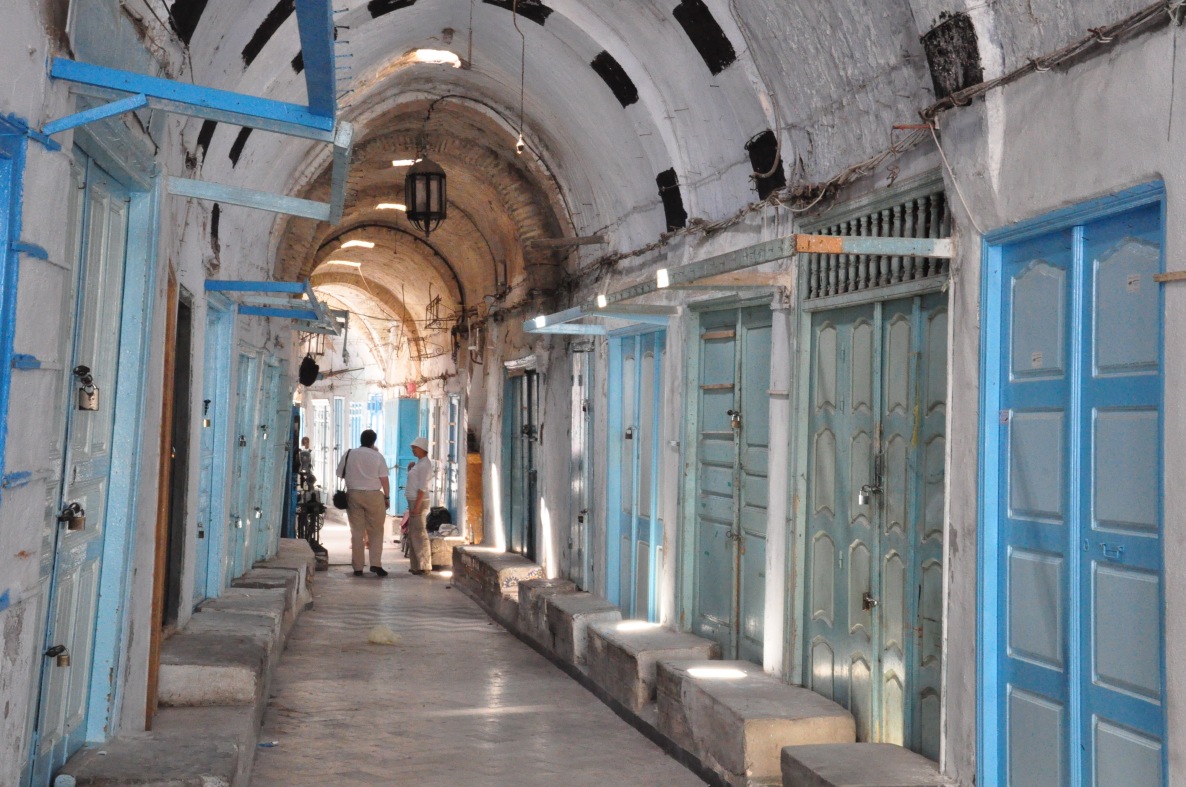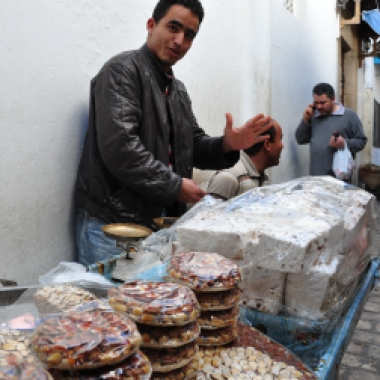Property 498 – Medina of Sousse
Today I’m writing about two separate World Heritage properties within the same country – the respective Medinas of Tunis and Sousse, both in Tunisia. Where Northern Europe has the old town, the Islamic world has the medina. This is the dense urban core laid out in a confusing network of passageways and lanes, which makes perfect sense to the inhabitants and is utterly baffling to visitors. These two sites, only a couple of hours from each other, are in my view some more the most engrossing urban environments in the world.
But first, a confession.
I don’t remember which medina is which.
I have an excuse though! Medinas are meant to be confusing, or at least that’s the way it seems. I visited them both over the course of two days, and given that this was in 2010, many of the details have blurred together in my mind. I wish I’d kept contemporaneous notes at the time, but I just have some photos to go on. So, lacking any better documentary material I’m going to discuss them both as if they were one site, which given their similarities, isn’t completely unreasonable.

The medina is the Middle Eastern solution to the same problem tackled by Northern European walled towns – how to make a liveable urban environment which was also defensible. The history of North Africa has included numerous cases of invasion from east or west, meaning that living in the open was a bad idea. The early modern era also featured widespread piracy in the Mediterranean, much of which was sourced from and contested between Ottoman vassal states in North Africa. At one point this was enough of a problem that the nascent United States decided to wage war on the Barbary Pirates . Living in some kind of fortified settlement provides protection against raiders, but also somewhere safe to return to when one’s own raiding is complete.
A side effect of strong defences is that residents of the medina are, by necessity, crammed in like sardines in a tin can. You’d think that this would result in a horrible sense of claustrophobia, and certainly it wasn’t exactly roomy. Sanitation was also a problem historically. But living in tight quarters also helps meet one of the most basic needs – community.
Walking through the medinas of Tunis and Sousse today, it’s hard not to be struck by just how intimate everything is. There are few buildings more than two storeys high, laneways and passages are rarely wide enough for more than a couple of people to pass, and the layout is chaotic at best. This is exactly the kind of environment the promotes strong human connections. If you live in a medina, it’s barely possible to leave your home without running into someone you know. Far from the emotional aridity of modern cities, the medina is a deeply personal space.
The lack of space also means that the public-private divide that I’m used to doesn’t exist here. There is an imperceptible shading of ownership between the deep interior of a home, right out to the plaza in front of a major mosque. Everyone has a degree of control over all the space in the town, and business is usually conducted in the street rather than in specialised places. Tiny sub-regions of the medina are under the unofficial control of local families and clans, and the entire town is overlaid with an invisible network of relationships which is invisible to me, the tourist. There are a number of notable buildings, mainly mosques, but they blend in with the environment and are easy to miss.
The medina is also well-designed for a semi-desert environment. Although it’s crowded, it’s also sheltered. There are tunnels and narrow passageways everywhere one looks, which are surprisingly well ventilated. Best of all, they keep the worst of the midday sun off your skin, and then the brick buildings are warm to sleep in at night. The residents of the medina take great pride in decorating their homes as well. Doors in particular appear to be targets for lurid paintwork, which helps to take the edge off the desert browns and greys.
 After a couple of days wandering around the medinas of Tunisia, it occurred to me that while they’re architecturally unremarkable, these spaces are actually finely tuned machines for people to live in. Being a resident of a medina wouldn’t always be physically comfortable, but it would be incredible socially rich, basically the opposite of a large western city. I have no doubt that this is why they have survived and are still lived in today.
After a couple of days wandering around the medinas of Tunisia, it occurred to me that while they’re architecturally unremarkable, these spaces are actually finely tuned machines for people to live in. Being a resident of a medina wouldn’t always be physically comfortable, but it would be incredible socially rich, basically the opposite of a large western city. I have no doubt that this is why they have survived and are still lived in today.





One thought on “The human hive – Medinas of Tunisia”